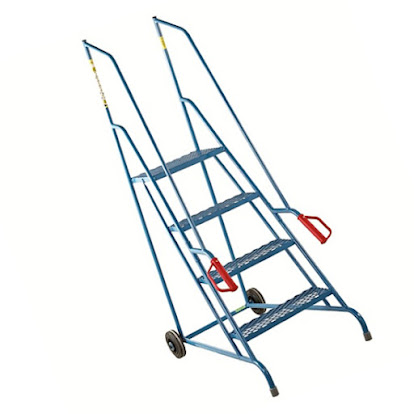Avoid carrying your ladder over power lines
Keep an eye out for overhead power lines so that you don’t have to carry your ladder over them. This will help you avoid having to do so. Keep in mind that metal objects have the ability to carry electricity. If you work within six meters of a power line, you should never assume it is dead. Always treat power lines as living things. Using Fibreglass Ladders to support electrical work at height can increase an electrician’s safety. In the event of an accident, this non-conductive ladder, which can withstand up to 30,000 volts, has the potential to save a life.
Stabilizing your ladder
Although securing your ladder to upper support does not ensure that it will not slip, it may help you avoid falling. Because the gutters could fall off if the ladder slips, it is not recommended that a ladder be secured to plastic surfaces like gutters.
Both the unstable nature of a ladder and the frequently uneven ground in its vicinity can contribute to an accident involving a ladder. As a solution to this issue and to make it much safer for you to place your ladder on the ground that is uneven or sloping, we provide a leveling mat. Additionally, our leveling mat enhances traction and stops the ladder from slipping out from under you.
Safety on a step ladder
Although it is generally believed that a leaning ladder is more dangerous than Step Ladders, both can be dangerous if assembled incorrectly.
Make sure that all four of your feet are on the ground
The base of your step ladder ought to be on the ground as well. On these ladders, instability issues are more likely to occur.
 |
| Heavy Duty Step Ladders |
Use a step ladder only for light work
Don’t use tools or materials that are too heavy. They were made for simple tasks.
Avoid going too far
Use only the bottom three steps if there is a handrail on the top three steps to avoid going too far. Both multi-step ladders and step ladders are subject to overreach regulations.
Enable locking mechanisms
Locking mechanisms should be disabled if you are concerned about the step ladder’s safety.
Keep in mind the three-point contact rule
Always use one hand whenever possible and ensure that both feet are on the Extension Ladders in accordance with the three-point contact rule. The ladder can be useful when you need both hands. Concentrate entirely on the current task; Never work sideways or lean over.
Don’t forget our safety advice…
You should always follow our safety advice to avoid some of the most common ladder accidents, regardless of how you use them, even though ladders are used all over the country.
To Read More Articles:
Comments
Post a Comment